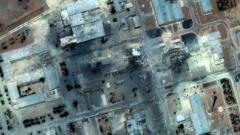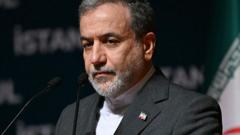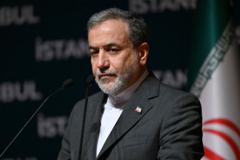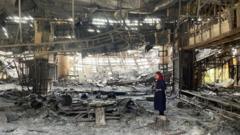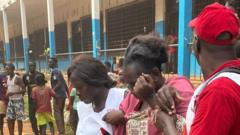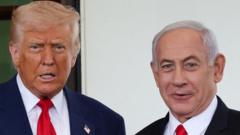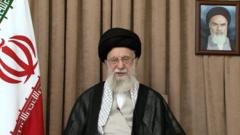As Tehran slowly rebuilds and reopens, its citizens grapple with the psychological scars and uncertainty left by a recent conflict with Israel. Despite the city’s lively return to normalcy, many residents express fear for their future and frustration with government actions.
Tehran's Resilience Amidst Conflict: A City on Edge
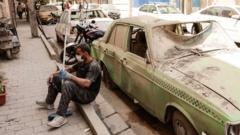
Tehran's Resilience Amidst Conflict: A City on Edge
Residents of Tehran confront a mix of hope and anxiety as they navigate the aftermath of recent violence and ongoing geopolitical tensions.
In the heart of Iran’s capital, Tehran is in the process of returning to life, yet its residents find themselves grappling with deep-seated fears and uncertainties. Once muted by conflict, the city is bustling anew; cafes open their doors, including the Boof cafe, which uniquely occupies the grounds of the long-abandoned US embassy. Barista Amir shares a mix of cautious optimism, voicing hope for improved relations with America as he serves distinctive iced drinks. “US sanctions hurt our businesses and make it hard for us to travel around the world,” he laments while patrons of diverse backgrounds occupy the café, showcasing the complex social fabric of the city.
Just a short distance away, the stark reality of the recent conflict resonates deeply. At Iran's state television station, IRIB, a speech from Supreme Leader Ayatollah Ali Khamenei blares through the crumbling remnants of a studio decimated by Israeli airstrikes. His words underscore the Iranian narrative of resilience, declaring, “The Americans have been opposing the Islamic Republic of Iran from the very beginning.” With the station’s main studio reduced to ash, the psychological impact of the war looms large, leaving citizens to navigate fear and uncertainty.
The healthcare sector is still feeling the repercussions. At Taleghani General Hospital, head nurse Ashraf Barghi conveys the immediate impact of the violence, recounting her experience treating the injured following missile strikes. “I am scared they might attack again,” she says, her anxiety reflecting a sentiment echoed by many in the city. The human toll is significant, with the health ministry reporting hundreds dead and thousands injured, highlighting the added strain on an already struggling populace.
Despite the pall hanging over them, the streets of Tehran are bustling once again, a superficial semblance of normalcy returning. People wind through the bazaars and navigate the busy streets, yet fear lingers beneath the surface. “It's so heart-breaking,” expresses Mina, a young woman who feels overwhelmed by the uncertainty shadowing her hopes for the future. Meanwhile, public gatherings, such as an open-air concert featuring patriotic songs, bring fleeting moments of unity among Tehran's diverse residents.
In the gatherings, voices of dissent emerge, calling for greater freedoms while expressing dissatisfaction with the government's handling of the crisis. Young people like Hamed advocate for the need to embrace dialogue over aggression, aiming for a peaceful resolution amid rising tensions. The complexities of their situation create a landscape where caution is urged, yet the spirit of defiance remains resolute.
Though the Iranian capital shows signs of recovery, the challenges that lie ahead remain daunting. As Tehran’s residents cautiously rebuild their lives, the geopolitical landscape continues to shift, and anxieties about the potential for renewed conflict don't easily fade. In the midst of this, an undercurrent of hope and determination persists among citizens, reflecting the city’s resilience in the face of uncertainty.


